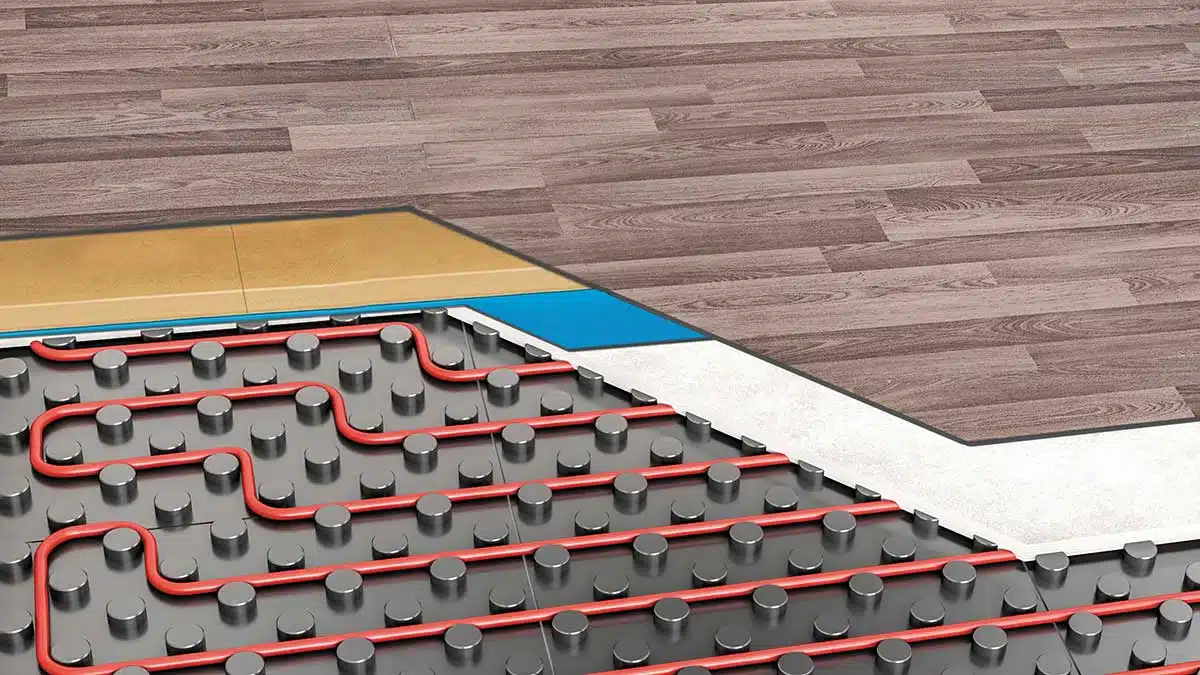Get the most out of your underfloor heating!
Underfloor heating is a popular way to warm your home. This is because the heat released through the floor is evenly distributed throughout the room, making the heat feel extremely pleasant.
To achieve this living comfort, there are a number of things to consider when choosing underfloor heating:
- Floor insulation
- Underlay
- Top floor
Floor insulation
Heat always moves from a higher temperature to a lower temperature. As a result, some of the heat from underfloor heating can flow to the ground instead of to the floor surface.
And you don’t want that to happen. Installing insulation material under the floor helps block some of the heat leaking downwards.
Floor insulation noticeably raises the temperature of the floor to around 4°C.

Underlay
A good underlay is essential in combination with underfloor heating. If you were to install an top floor directly on top of your basic floor, you run the risk of your top floor warping (in the case of laminate, for example) or being uneven. A good underlay is also moisture-resistant and vapour-proof.
But what should you pay attention to when buying an underlay? In any case, you should make sure that the thermal resistance (the so-called R-value) is as low as possible. If this, in combination with your top floor, is lower than 0.15 m² K/W, you’re always in the right place. The lower the number, the better in this case.
Top floor
When choosing a top floor, the thickness of the material is important. Laminate is a lot thicker than LVT. So look carefully at the R-value of both the top floor and the underlay. Naturally, LVT conducts better than laminate. The lower the resistance value is, the faster your floor will warm up.

Best underlay
So what is the best underlay then? That depends on whether you live in a house or a flat. In the latter, you have to take noise reduction into account. Your underlay and top floor should therefore have a 10 dB sound reduction. This in turn affects the R-value of both floors.
Advice
So there are many things to consider. Of course, we can advise you on these.
Here you will find the most suitable underlays and subfloors with optimal heat transfer.



